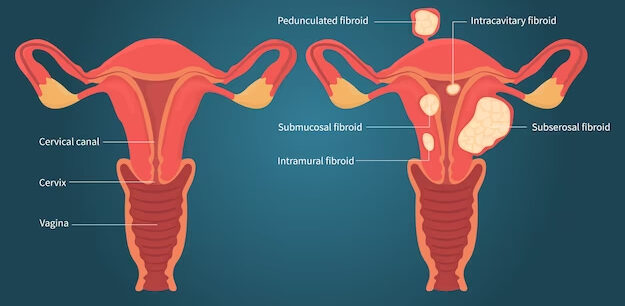Uterine Fibroids

Diagnostic Assessment: Comprehensive evaluation and diagnosis of uterine fibroids, benign growths in the uterus that can cause symptoms such as heavy menstrual bleeding and pelvic pain.
- Thorough review of medical history, symptoms, and imaging studies (ultrasound, MRI) to confirm the presence of fibroids.
- Utilization of minimally invasive diagnostic procedures like hysteroscopy or laparoscopy for detailed assessment when necessary.
Treatment Options: Individualized treatment plans tailored to address symptoms and patient preferences while considering factors such as fibroid size, location, and reproductive goals.
- Medical management with medications to alleviate symptoms such as pain and heavy bleeding.
- Minimally invasive procedures including uterine artery embolization (UAE), myomectomy, or endometrial ablation for symptom relief while preserving fertility.
Patient Education and Support: Empowering patients with knowledge about uterine fibroids and available treatment options to make informed decisions.
- Counseling on lifestyle modifications, dietary changes, and alternative therapies to manage symptoms and promote overall well-being.
- Ongoing support and follow-up care to monitor treatment efficacy, address concerns, and optimize outcomes.
